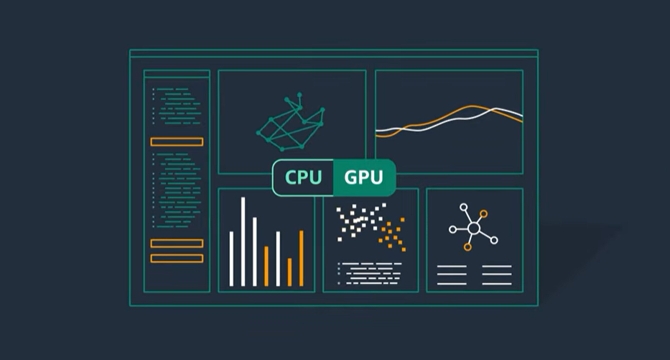Cloud News
Dev
240

Image Credit: Dev
Implement Secure Storage Solutions for Internal Corporate Use
- Implementing secure storage solutions for internal corporate data is crucial for safeguarding sensitive information, ensuring operational continuity, and meeting regulatory standards.
- Key steps include creating a secure storage account, enabling high-availability configurations, establishing storage containers with restricted access, and setting up Shared Access Signatures (SAS) for temporary external permissions.
- Implement storage access tiers for optimizing costs, such as transitioning blobs from hot to cool tiers after a specified period, and set up content replication strategies for backup purposes between storage accounts.
- Azure storage offers robust data protection features like encryption, RBAC-based access control, private endpoints for network security, alerting capabilities, and lifecycle management policies for seamless data transitions and object replication.
Read Full Article
14 Likes
Dev
109

Image Credit: Dev
👥 Cloud Identity and Access Management (IAM) 🔓
- The GitHub repository 'Cloud-Computing' focuses on setting up virtual machines, S3, and services using LocalStack for local AWS simulation.
- Identity and Access Management (IAM) in AWS ensures secure control over access to services and resources.
- IAM includes key concepts like identities (users, groups, roles), policies, roles with temporary credentials, and Multi-Factor Authentication (MFA).
- Best practices for IAM involve implementing the Least Privilege Principle, enabling MFA, using IAM roles for services, and regular access key rotation.
- Real-world IAM use cases include enterprise-level Role-Based Access Control (RBAC) and compliance enforcement in institutions like financial organizations.
- IAM implementation with LocalStack involves creating users, roles, attaching policies, and managing permissions efficiently for testing before deployment in AWS.
- Commands like creating users, roles, attaching policies, and listing users/roles with expected outputs help streamline IAM management.
- IAM roles facilitate secure interactions between AWS services like EC2 and resources, ensuring temporary credentials are securely assigned.
- The Trust Policy document defines which services or users can assume an IAM role, enabling controlled access to resources.
- IAM setup enables users to manage access to AWS services effectively, promoting security, compliance, and streamlined access management.
Read Full Article
6 Likes
Dev
404

Image Credit: Dev
Lessons learnt from hosting a virtual meetup for AWS UG Women in Tech India
- Author shares experience of hosting a virtual meetup for AWS UG Women in Tech India group.
- Lessons learned include the importance of preparation, communication with speakers, dealing with technical glitches, and promoting sessions on social media.
- List of essential pointers to consider when hosting a virtual session for AWS UG, including details to provide to speakers and preparations for the event day.
- Acknowledgment given to the AWS WiT India Group lead coordinators and the speaker for their support and commitment in organizing the session.
Read Full Article
24 Likes
Medium
241

Rewiring Data Storage: How Botanika Is Powering the Next Generation of Micro – Data Centers
- The article discusses the storage paradox between centralized clouds and fragmented DIY DePINs.
- Hyperscale clouds offer massive capacity but come with drawbacks like single points of failure and high costs.
- DIY DePINs provide permissionless participation but lack automated provisioning and built-in orchestration.
- Botanika aims to combine cloud reliability with DePINs' economic inclusion by creating self-optimizing micro-data centers.
- Botanika's NIMBUS nodes offer automated sharding, AI orchestration, and token-based incentives for data hosting.
- HOA SEN protocol by Botanika ensures secure, high-performance data transmission through homomorphic encryption and adaptive FEC layers.
- Real-world use cases of Botanika include smart city surveillance, rural video streaming, and scientific research grids.
- Botanika enables easy onboarding, integration with SDKs, real-time monitoring, and optimization through its dashboard.
- In conclusion, Botanika democratizes data storage with intelligence, bridging edge computing performance with decentralized network resilience.
- By offering NIMBUS nodes and HOA SEN protocol, Botanika transforms devices into intelligent micro-data centers for various applications.
- To explore Botanika's innovative storage solutions, visit botanika.io and join the global network redefining data infrastructure.
Read Full Article
14 Likes
Discover more
- Programming News
- Software News
- Web Design
- Devops News
- Open Source News
- Databases
- Product Management News
- Operating Systems News
- Agile Methodology News
- Computer Engineering
- Startup News
- Cryptocurrency News
- Technology News
- Blockchain News
- Data Science News
- AR News
- Apple News
- Cyber Security News
- Leadership News
- Gaming News
- Automobiles News
Dev
241

Image Credit: Dev
📝 Blog Draft: Day 30 – “How Linux Rewired My Mind in 30 Days”
- The author embarked on a 30-day challenge to learn Linux from scratch, sharing their journey and learnings with over 1300 dev.to friends and the CloudWhislter Community.
- Favorite projects included Git & Terraform for version control and infrastructure as code, automating health checks with AI diagnostics, and email integrations for notifications.
- The author explored dangerous Linux commands, SSH key authentication, and used Linux as a learning playground by teaching Linux to a 10-year-old, creating a command-line Hunt Game, and summarizing commands in a script.
- They also built impressive projects like a Raspberry Pi Smart Cat Feeder, a Terminal Weather App, a CI/CD pipeline, and a secure banking portal simulation, while delving into Linux history and lessons learned forever.
Read Full Article
14 Likes
Dev
9

Image Credit: Dev
✅ Day 29 Theme: "Linux Portfolio Builder + Reflections CLI Style"
- Created a script named 'Day29.sh' as an interactive Linux portfolio script to summarize a 30-day Linux journey.
- Highlighted achievements including working with Git, Terraform, CI/CD, AI-powered health checks, email alert automation, and more.
- Displayed most used commands and favorite projects upon user input.
- Expressed gratitude to the Linux community and followers, concluding with readiness for the last day of the challenge.
Read Full Article
Like
Tech Radar
31

Image Credit: Tech Radar
Google's AI Overviews are often so confidently wrong that I’ve lost all trust in them
- Google's AI Overview combines Google Gemini's language models with Retrieval-Augmented Generation to generate summaries for search queries, but it can be unreliable due to issues in the retrieval and language generation process.
- The AI can make erroneous leaps and draw strange conclusions, leading to famous gaffes like recommending glue on pizza or describing running with scissors as a cardio exercise.
- Despite improvements made by Liz Reid, head of Google Search, users still trick the AI into fabricating information or hallucinating, raising concerns about its accuracy and trustworthiness.
- Some queries deliberately mislead the AI, but genuine questions can also lead to unreliable results, especially since many users don't verify the sourced information.
- Google's AI Overviews seem to avoid topics like finance, politics, health, and law, indicating limitations in handling more serious queries.
- The article warns about blind trust in AI-generated content and suggests users critically evaluate and verify information rather than solely relying on AI summaries.
- Regular use of technology like GPS can negatively impact cognitive skills, and reliance on AI for information without critical thinking can exacerbate the issue.
- The author expresses skepticism about the reliabilities of AI tools like Google's AI Overviews and emphasizes the importance of seeking human-authored or verified articles for accurate information.
- While AI tools may improve in the future, current reliability concerns persist, with high reported hallucination rates and increasing unreliability in AI-generated content according to recent reports.
- The article underscores the need for users to be discerning and cautious when utilizing AI-generated summaries and to prioritize verified sources for crucial information.
Read Full Article
1 Like
Siliconangle
13

Image Credit: Siliconangle
AWS open-sources Strands Agents SDK to ease AI agent development
- AWS has open-sourced Strands Agents SDK, a toolkit for developing AI agents.
- Strands Agents SDK allows integration of large language models and supports tools like Amazon Bedrock and Anthropic PBC's API.
- The SDK includes prebuilt tools for tasks and managing data processed by AI agents.
- AWS plans to enhance Strands Agents SDK with support for multi-agent collaboration and data orchestration in the future.
Read Full Article
Like
Dev
227

Image Credit: Dev
A Simple AWS-Powered Clinic Appointment System App Using Docker and SNS
- The article discusses the creation of a Clinic Appointment Management System using Docker, FastAPI, and AWS services for patients to book appointments online, receive real-time notifications, and enable admin data management.
- The architecture includes components like VPC setup with public and private subnets, Dockerized microservices handling frontend, patient, doctor, appointment, and notification services, PostgreSQL database, OpenVPN for admin access, and AWS SNS for real-time notifications.
- Security measures like IAM roles, security groups, private subnets, and OpenVPN are implemented. Monitoring with CloudWatch and scalability features like load balancer and Docker microservices updating independently are included in the design.
- Future enhancements include adding HTTPS support, using AWS RDS, setting up CI/CD pipeline, switching to ECS or EKS, domain-level routing with Route 53, advanced security measures like WAF, GuardDuty, Inspector, and implementing alerting mechanisms.
Read Full Article
13 Likes
Dev
9

Image Credit: Dev
Couchbase Weekly Updates - May 16, 2025
- Couchbase is now officially supported on Google’s MCP Toolbox for Databases in the new version v0.5.0.
- A 4-step guide is provided for upgrading from Capella Free Tier to a Paid Account for scaling apps or workloads with bigger demands.
- Migrating over 300k Hugging Face datasets into Couchbase is made easier with the new Hugging Face to Couchbase migration toolkit, offering tools like Couchbase VS Code Extension and cbmigrate CLI.
- Couchbase will be present at 18 AWS Global Summits this year, showcasing the partnership with AWS and how Couchbase Capella™ on AWS helps developers build AI apps and agents faster with a unified data platform and automated workflows.
Read Full Article
Like
Digitaltrends
109

Image Credit: Digitaltrends
This HP Pavilion laptop is a steal at 55% off — hurry!
- HP Pavilion 16t laptop is on sale with a 55% discount from HP, priced at $530 instead of $1,200, offering savings of $670.
- The laptop features 13th-generation Intel Core i5 processor, Intel Iris Xe Graphics, 8GB of RAM, and a 16-inch screen with WUXGA resolution, suitable for daily tasks and entertainment.
- With a 512GB SSD and pre-installed Windows 11 Home, the HP Pavilion 16t is ready for immediate use for work and storage needs.
- Hurry to grab this deal as stocks may deplete quickly considering the high discount, making it a smart purchase for those in need of a reliable laptop.
Read Full Article
6 Likes
Dev
446

Image Credit: Dev
Voice to Voice AI with Amazon Nova Sonic
- Amazon Nova Sonic is a speech-to-speech model that allows real-time, human-like voice conversations with low latency.
- It offers both masculine-sounding and feminine-sounding voices with American and British English accents.
- Nova Sonic can be used in Agentic workflows, consult knowledge bases, and utilize tools like MCP servers.
- To use Nova Sonic, developers can utilize AWS SDKs in various languages and the new bidirectional InvokeModelWithBidirectionalStream API.
Read Full Article
26 Likes
Dev
322

Image Credit: Dev
Building Software Development Artifact Generator Using Amazon Nova and Amazon Bedrock
- The article discusses the creation of a Software Artifact Generator using Amazon Nova and Amazon Bedrock to streamline the software development process.
- The need for a quick, reliable, and efficient software development process is highlighted, focusing on reducing time spent on documentation tasks.
- Amazon Nova on Bedrock was chosen for its high performance, contextual understanding, and seamless integration with AWS services.
- The architecture overview includes components like Amazon API Gateway, AWS Lambda (Python), and Amazon Bedrock (Nova model), offering a serverless and scalable solution.
- The prompt-to-artifact flow involves user prompt submission, processing by Lambda and Bedrock, generating software artifacts, and returning results as JSON responses.
- Implementation steps include requesting access to Amazon Nova models, creating AWS Lambda functions, and setting up HTTP POST APIs in AWS API Gateway.
- A sample use case demonstrates generating a requirement specification for a small e-commerce website in markdown format.
- Next steps involve integrating the prompt-passing API with a front-end for easier artifact generation.
- The article concludes by emphasizing the transformative capability of Amazon Nova in accelerating software creation and the author's commitment to innovation through the Amazon Community Builders program.
- Resources and references for Amazon Bedrock documentation, AWS Lambda Python guide, and API Gateway integration are provided for further exploration.
Read Full Article
19 Likes
Tech Radar
318

Image Credit: Tech Radar
AMD subtly confirms reveal date for its next Radeon GPU – an ideal time to compete with Nvidia at Computex 2025
- AMD is likely to reveal its Radeon RX 9060 XT on May 21, following a teaser on its X page.
- The Radeon RX 9060 XT, expected to go on sale in June, will feature two variants - one with 8GB of VRAM and the other with 16GB.
- AMD will not sell any reference cards for the new GPU, making it available only through board partners.
- AMD appears poised to outshine Nvidia in the budget GPU market during Computex 2025, with pricing being a critical factor for success.
Read Full Article
19 Likes
Dev
409

Image Credit: Dev
Deploying LLMs on Amazon EKS using NVIDIA GPUs
- Deployed an LLM inference solution using NVIDIA GPUs on Amazon EKS while attending an AWS hands-on workshop.
- Utilized Ray Serve and vLLM for deploying the Mistral 7B Instruct v0.3 model on Amazon EKS.
- Deployed components like Ray, Ray Serve, and vLLM for building and managing generative AI applications on Amazon EKS.
- The deployment included using the kuberay operator for handling Ray complexity, utilizing Ray dashboard for cluster visibility, and installing NVIDIA DCGM exporter for GPU monitoring.
Read Full Article
24 Likes
For uninterrupted reading, download the app